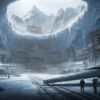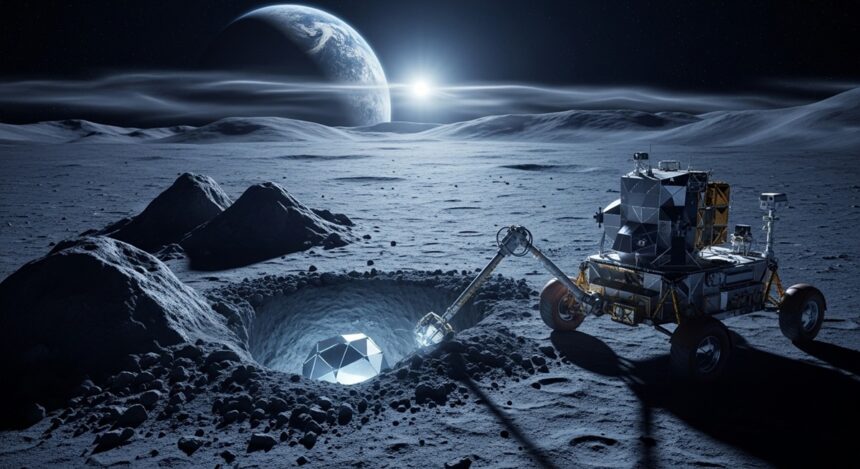For centuries, the Moon has been a symbol of mystery and wonder, gazing down on Earth as humanity pondered its origins. The recent success of India’s Chandrayaan-3 mission has catapulted this celestial body back into the spotlight with a discovery that has left scientists both baffled and exhilarated. Unearthed in the lunar south pole, evidence suggests we may have stumbled upon remnants of an ancient enigma buried beneath the surface. This groundbreaking find is prompting a reevaluation of everything we thought we knew about our nearest neighbor in space.
This revelation, stemming from the mission’s exploration of the lunar south pole, has sparked intense debate, revived old mysteries, and raised questions about the very nature of our closest celestial neighbor.
Chandrayaan-3: A Bold Step into the Unknown
India’s Chandrayaan-3 mission, spearheaded by the Indian Space Research Organisation (ISRO), achieved a remarkable feat with its successful landing in the Moon’s southern hemisphere in 2023. This mission broke new ground by targeting the lunar south pole, an area famed for its uncharted territories and permanently shadowed craters. The goal was to investigate the Moon’s composition, search for vital resources like water ice, and unlock secrets preserved in its ancient crust.
Equipped with cutting-edge tools such as radar, thermal sensors, and subsurface probes, the mission’s rover, Pragyan, was poised to delve into the Moon’s regolith—the dusty layer coating its surface—and beyond. What it found, however, has turned the mission into a pivotal moment in space exploration, revealing anomalies that defy conventional wisdom.
A Glimpse Beneath the Surface
Beneath the Lunar Surface: A Startling Revelation
As Pragyan initiated its subsurface scans, it detected structures that challenge our understanding of lunar geology. Leaked reports hint at the presence of geometrically precise formations, including tunnel-like cavities and dome-shaped features hidden beneath the regolith. These were not mere surface irregularities; radar and thermal imaging corroborated their existence, showcasing patterns too orderly to be dismissed as natural.
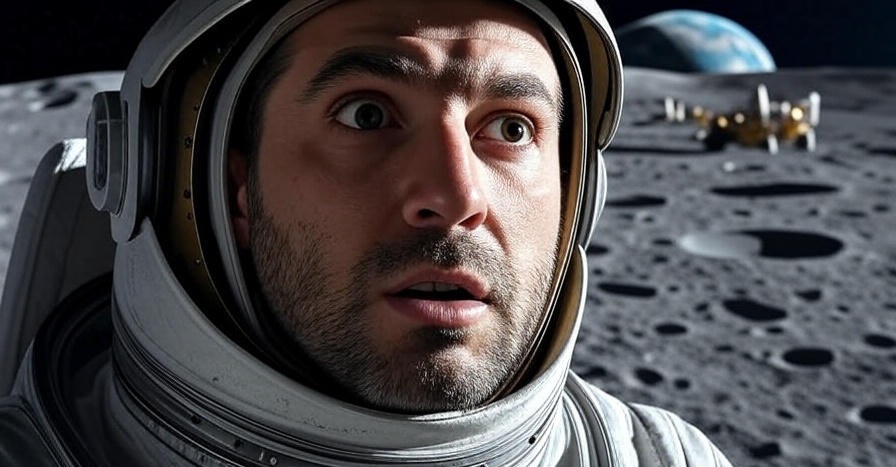
Even more perplexing were the unusual electromagnetic pulses and sudden temperature shifts recorded in deeper layers, alongside traces of metal compounds where they were least expected based on current lunar formation theories. These findings have sparked a wave of intrigue: Could the Moon harbor secrets that rewrite its history?
A Discovery That Defies Explanation
The Chandrayaan-3 data has thrust the scientific community into uncharted territory. The discovery of structured formations beneath the lunar surface has led some to speculate about possibilities beyond natural geology. Independent researchers are buzzing with theories, suggesting these could be relics of an ancient, unknown civilization, while others propose they might stem from rare, undiscovered geological processes.
“What we saw under the surface of the Moon violates all conventional notions. It’s not just a geological anomaly—it’s a structure that looks like it’s designed. If these data are confirmed, we are not dealing with a natural formation, but with something that requires a revision of all our cosmic hypotheses. We may have disturbed something ancient.”
The lack of official statements from ISRO, which has only confirmed the electromagnetic and thermal anomalies, has fueled the fire. The agency’s silence has left room for imagination to run wild, with some wondering if these structures hint at a past we’ve yet to comprehend.
The Case for Artificial Structures
The idea that the Moon could harbor artificial structures is not entirely new, but Chandrayaan-3’s findings have lent it unprecedented credibility. The geometric precision of the tunnels and domes, combined with the presence of unexpected metal compounds, suggests a level of complexity that natural processes struggle to explain. Some independent researchers have proposed that these could be remnants of an ancient civilization, perhaps one that predates humanity or originated elsewhere in the cosmos.
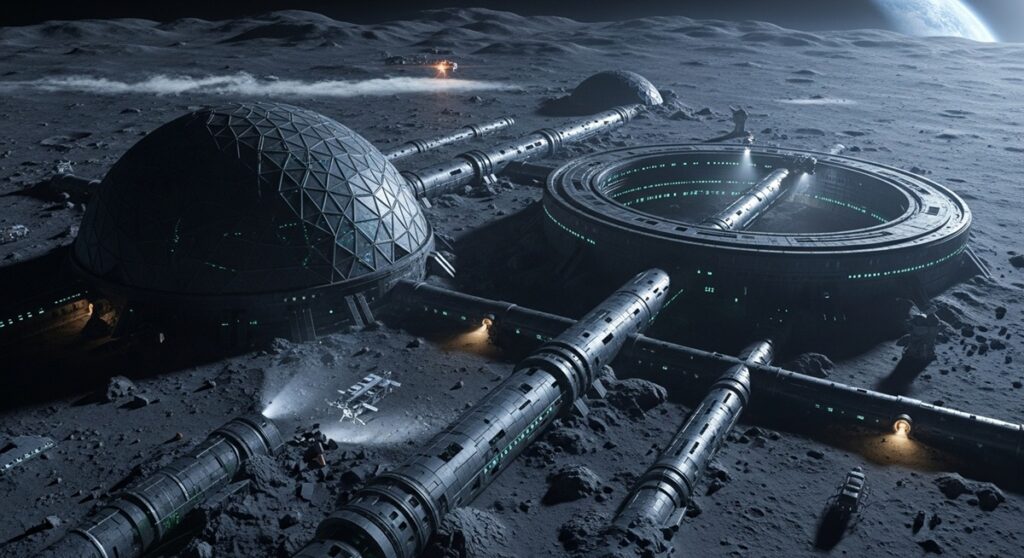
However, skepticism remains strong. Other scientists argue that these structures could result from rare geological phenomena, such as volcanic activity or tectonic processes, that are poorly understood in the context of the Moon. The debate hinges on whether these formations are the product of natural forces or something far more extraordinary.
The Lunar South Pole: A Region of Mystery
The choice of the lunar south pole as Chandrayaan-3’s landing site was no accident. This region, with its permanently shadowed craters, is one of the least explored areas of the Moon. These dark zones, untouched by sunlight for billions of years, are thought to preserve primary lunar matter, including water ice and volatile compounds. Scientists have long speculated that these areas could hold clues to the Moon’s origins and the early history of the solar system.
The discovery of anomalous structures in this region adds a new layer of intrigue. Could these shadowed craters conceal more than just frozen water? Some researchers now wonder if they might be hiding evidence of ancient technology or activity, preserved in the Moon’s airless, unchanging environment.
A Race to the South Pole
The Chandrayaan-3 findings have triggered a global response. Major space agencies, including those from Europe, China, and Japan, have announced plans for their own missions to the lunar south pole. This surge in interest suggests an unspoken race to uncover—or perhaps control—whatever lies in this enigmatic region. Commentators speculate that the stakes are high, as these discoveries could have implications for science, technology, and even geopolitics.
Revisiting the Moon’s Origins
The prevailing theory of the Moon’s formation, known as the Giant Impact Hypothesis, posits that the Moon formed from debris ejected after a massive collision between Earth and a Mars-sized body called Theia. This model has guided lunar science for decades, but the Chandrayaan-3 findings challenge its assumptions. If artificial or highly unusual structures are confirmed, scientists may need to rethink the Moon’s history entirely.
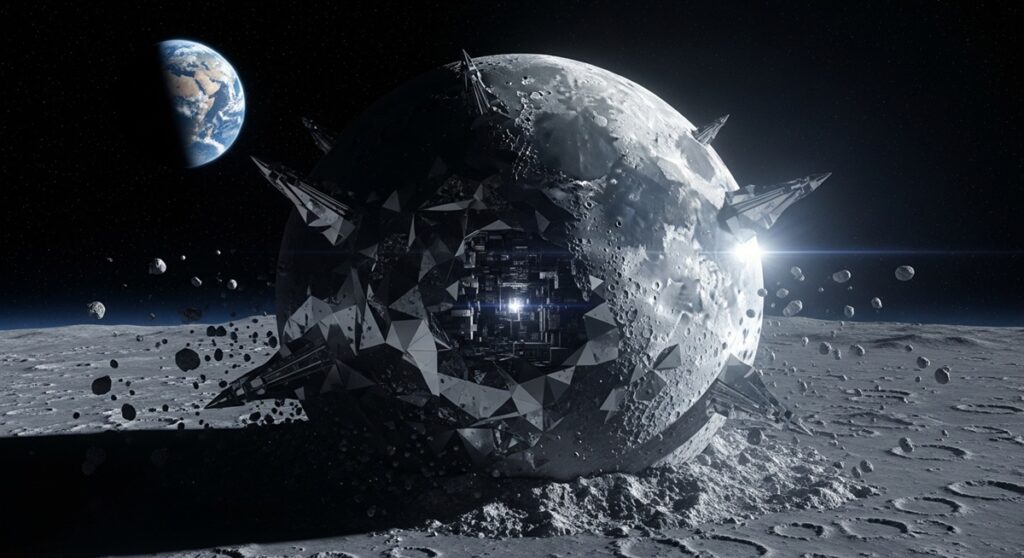
Could the Moon have been shaped by processes—or intelligences—beyond what we’ve imagined? The presence of metal compounds and structured formations raises the possibility that the Moon’s history is more complex than a simple collision event. Some researchers are even revisiting older, fringe theories that suggest the Moon itself could be an artificial construct, though such ideas remain highly speculative.
Apollo’s Unexplained Encounters
The Chandrayaan-3 revelations have also breathed new life into accounts from NASA’s Apollo missions. Astronauts reported eerie experiences, including mysterious light flashes, unidentified objects, and an unsettling feeling of being observed. Once brushed aside as anecdotal, these stories are now being reconsidered in light of the new evidence.
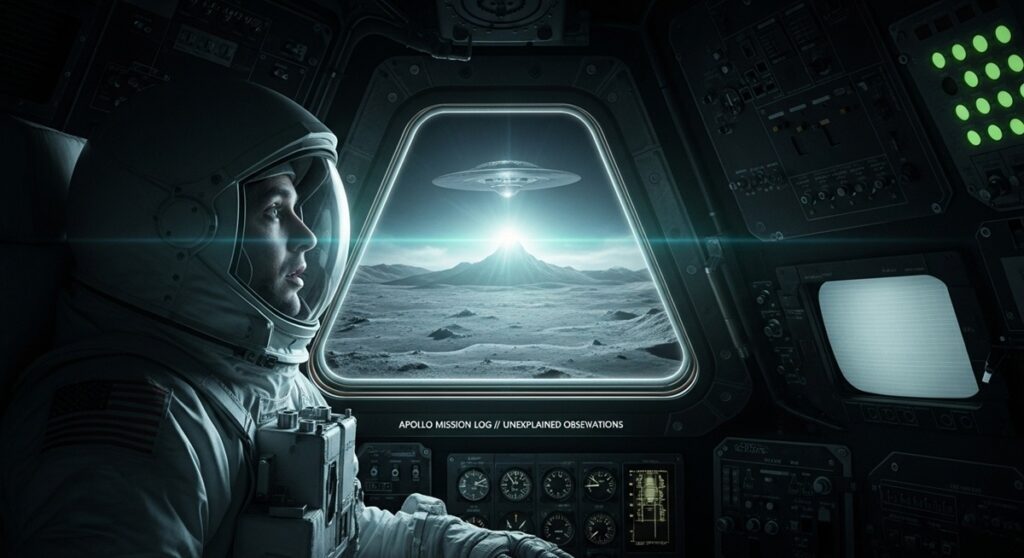
Might these early observations connect to the structures now being uncovered? While no conclusive link exists, the parallels are compelling enough to warrant a closer look.
The Call for Transparency
As news of the Chandrayaan-3 discoveries spreads, public interest has surged. Social media platforms are abuzz with discussions, ranging from excitement to skepticism. Many users are demanding full transparency from ISRO, urging the agency to release all data related to the findings. The lack of official statements has only fueled speculation, with some accusing space agencies of withholding critical information.
ISRO has acknowledged the detection of electromagnetic pulses and temperature anomalies but has remained tight-lipped about the full scope of the discoveries. This reticence has led to calls for an international scientific review to ensure that the data is rigorously analyzed and shared with the global community.
A Cautious Approach
Scientists are urging caution in interpreting the findings. As one researcher noted, “The cosmos is a multi-layered system, and the Moon may indeed be its oldest layer. But we must approach these discoveries with skepticism and rigor.” Premature conclusions could lead to misinformation, while overhyped claims of extraterrestrial origins risk undermining the scientific process.
Further analysis, including additional lunar missions and advanced imaging, will be critical to confirming the nature of these structures. Until then, the scientific community remains divided between cautious optimism and healthy skepticism.
What’s Next for Lunar Exploration?
The Chandrayaan-3 mission has opened a new chapter in lunar exploration. With multiple nations poised to investigate the south pole, the next few years could yield answers to some of humanity’s most enduring questions. Are we truly alone? Does the Moon hold clues to a forgotten past? Or are we simply uncovering new dimensions of a natural world?
For now, the Moon remains a silent sentinel, its secrets locked beneath a dusty veneer. This mission reminds us that every step into the unknown can transform our perspective, sparking a quest for knowledge that knows no bounds.
A New Cosmic Narrative
Should these findings hold true, they could redefine not just the Moon’s history but humanity’s story as well. The hint of ancient structures—natural or otherwise—challenges our cosmic worldview and invites us to explore with open minds. As we stand at this crossroads, Chandrayaan-3 stands as a testament to the power of discovery to inspire and unsettle in equal measure.



